Breastfeeding Rates Comparison among the United States National average Nebraska and the 2020 Healthy People Objectives. Therefore US CDC breastfeeding initiation data in association with raceethnicity is taken from birth certificates.
The researchers found that the prevalence of breastfeeding initiation was 841 percent overall with variation by maternal raceethnicity from 903 to 736 percent among infants of Asian and.
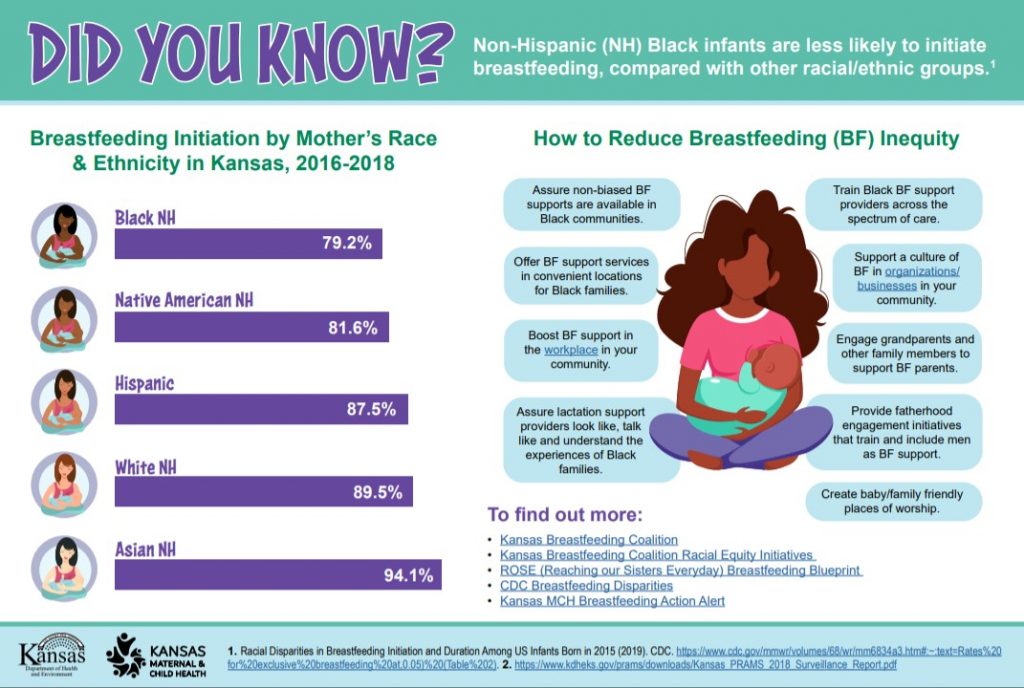
Cdc breastfeeding rates by race. Among all infants black infants had a significantly lower rate of any breastfeeding at age 3 months 580 than did white infants 727. 53 rows The percentage point difference in the rate of exclusive breastfeeding through. Breastfeeding Rates Are Impacted by Race and Ethnicity.
To describe breastfeeding initiation by maternal raceethnicity CDC analyzed 2019 National Vital Statistics System NVSS birth certificate data for 3129646 births from 48 of the 50 states all except California and Michigan the District of Columbia DC and three US. Territories Guam Northern Mariana Islands and Puerto Rico. Reports from the CDC show 83 percent of US.
For example among children born in 2016 740 of non-Hispanic Black infants have ever breastfed compared with 866 of non-Hispanic White infants Centers for Disease Control and Prevention 2019. The report finds that National estimates for breastfeeding initiation and duration to 6 months and 12 months were 734 417 and 210 respectively Table 1. Territories Breastfeeding data are obtained by maternal recall when children are between 19 to.
CDC surveys breastfeeding practices in the United States to monitor progress over time and identify priority areas that need attention. This decades-old disparity amounts to more than whether or not a. Black infants are 15 percent less likely to have ever been breastfed than white infants.
The prevalence of breastfeeding initiation was 841 overall and. Breastfeeding and infant feeding practices. For breastfeeding CDCs Division of Nutrition Physical Activity and Obesity tracks.
Generally racialethnic disparities in breastfeeding initiation were larger in states with higher overall breastfeeding initiation rates. 829 of Hispanic infants are ever breastfed. In the United States there are racial and ethnic disparities relating to breastfeeding.
Centers for Disease Control and Prevention National Immunization Survey Provisional Data 2011 births. Table 2 indicates that adjusted breastfeeding rates were lower than the corresponding crude rates among white eg 728 vs 784 for initiation 154 vs 177 for exclusivity and 229 vs 264 for continued breastfeeding at 12 months in 2009-2010 and Asian eg 761 vs 845 for initiation 170 vs 213 for exclusivity and 257 vs 339 for continued breastfeeding at 12 months. Black women breastfeed their babies at lower rates than white women according to a new government study.
Mothers breastfed their babies at birth. 74 of African-American infants are ever breastfed. The magnitude of disparity between the highest and lowest breastfeeding rates by racialethnic groups varied from 66 percentage points in Vermont to 376 percentage points in North Dakota.
Breastfeeding estimates varied by raceethnicity participation in the WIC supplemental. This report describes the results of that analysis which indicated that 715 of non-Hispanic white children were ever breastfed compared with 501 of non-Hispanic black children. National and state-level breastfeeding rates.
3641 The Centers for Disease Control and Prevention reports that the breastfeeding rate among low-income women participating in WIC is 675 whereas the rate for. It provides current national state selected local level and some US territory estimates of vaccination coverage rates for US children aged 19 to 35. Maternity care practices at hospitals.
Public opinion about breastfeeding. Breastfeeding Initiation Rates by RaceEthnic Groups 2013-2019 Table Graph Breastfeeding Initiation Rate by Age of Mother 2009-2019 Table Graph Breastfeeding Initiation Rates by Gestation and Birth Weight 2009-2019 Table Graph Breastfeeding Initiation Rates by. Children CDC analyzed data from the 2004 National Immunization Survey NIS.
Nationwide 544 of African-American mothers 743 white mothers and 804 of Hispanic mothers attempted to breastfeed according to a. Data Trends and Maps. The National Immunization Survey NIS uses random-digit dialing to survey US households with children and teens.
Racial disparities persist Centers for Disease Control and Prevention 2019. Grummer-Strawn Shealy 2009. Household population-based estimates of vaccination coverage among children teens Breastfeeding questions added in 2001 Telephone interviews with parents or guardians in 50 states DC and some US.
At age 6 months the rates were 447 among black infants and 620 among white infants p. US Breastfeeding Initiation Rates by Race and Ethnicity Non-Hispanic Black Hispanic Non-Hispanic White Asian HawaiianPacific Islander American IndianAlaska Native Multiple RacialEthnic Identities Data from 2015 CDC National Immunization Survey. To obtain current estimates of racial and economic disparities in breastfeeding among US.
The 2019 data was analyzed from 3129646 births. Several studies have found that WIC participation is strongly associated with low rates of breastfeeding initiation and early breastfeeding discontinuation particularly among African American and Hispanic women. Some of the stigmas stems from wet-nursing during slavery and a history of formula ads targeting Black families.
882 of Asian-American infants are ever breastfed. CDC 2014 Breastfeeding Report Card. 866 of Caucasian infants are ever breastfed.
The overall US breastfeeding initiation rate in 2019 was 841 but rates varied greatly by raceethnicity with the degree of disparity varying in each state. The Centers for Disease Control and Prevention caution against comparing state estimates for breastfeeding rates for infants born in 2017 to those for infants born in 2016 because of a change in the survey sampling frame.
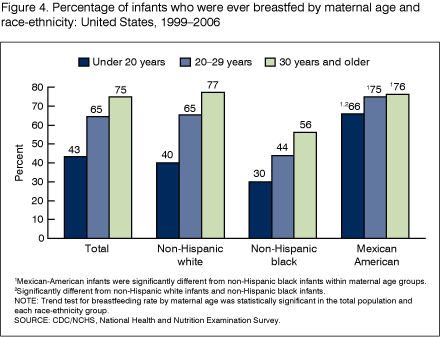
Products Data Briefs Number 5 April 2008
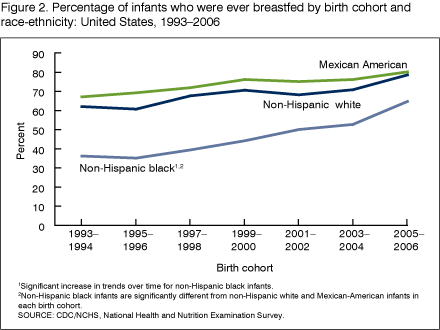
Products Data Briefs Number 5 April 2008
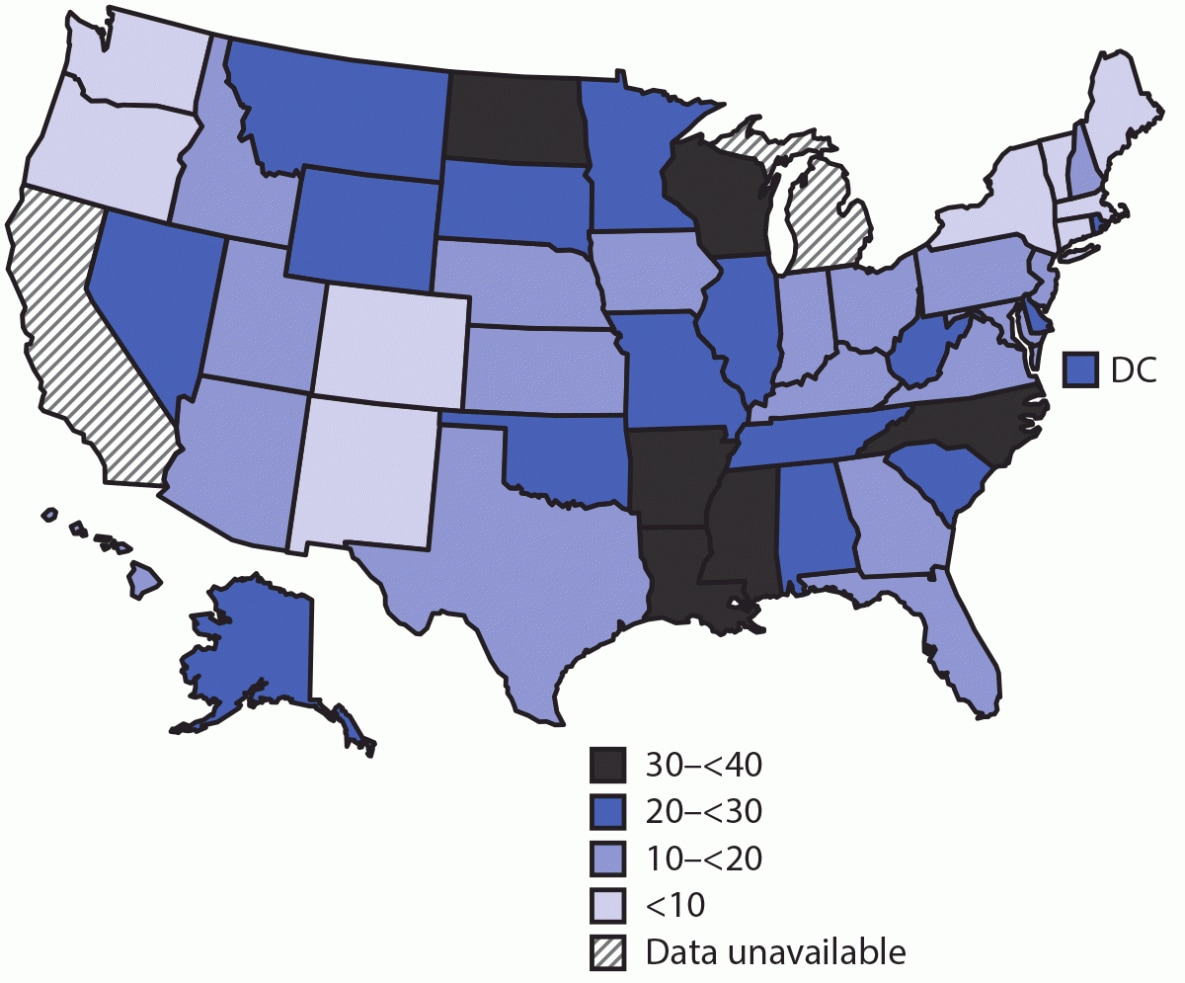
Racial And Ethnic Disparities In Breastfeeding Initiation United States 2019 Mmwr
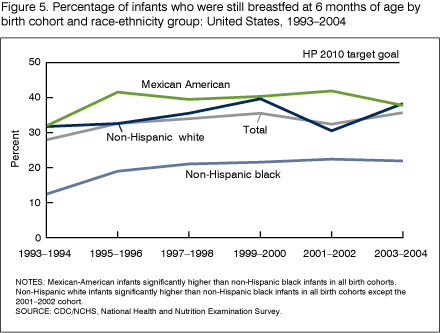
Products Data Briefs Number 5 April 2008

Figure Current Breastfeeding Rates By Race Ethnicity K Download Scientific Diagram